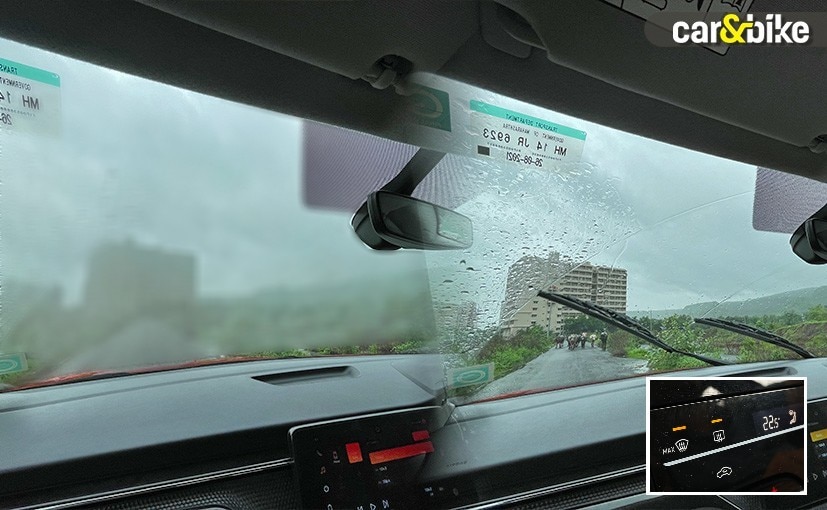Monsoon Car Care: 5 Things To Remember When Driving In Rains

Highlights
- Check your vehicle's wiring, lighting and tyres before stepping out
- Keep some newspapers and a towel handy to dry the cabin quickly
- Maintain a distance of 4 vehicles with the next car to avoid a mishap
The monsoon season is here and that means your commute is going to get a whole lot more hectic. Waterlogged roads, traffic jams, wet seats, and a mucky cabin. There's enough and more to deal with during the rains. But driving in the monsoon season can be rewarding and even quite scenic too. But only if you don't have a breakdown leaving you stranded or have to deal with a drenched cabin. That's why a little preparation and some quick thinking can save you a lot of effort. So, here are 5 things we recommend to make your monsoon drives safer and enjoyable.
Also Read: Monsoon Car Care: Change Your Wiper Blades In 6 Steps

A simple check on the lights and wiring can save you from severe electrical damage. You can check the tyre life by either doing the coin test or look for the tyre wear indicator
1. Check your lights, electricals & tyres
The lights and wiring on your vehicle are easily prone to damage in rains. Make sure the headlamps, indicators, and other electrical components are in working order. Cover up any exposed wiring to avoid a short circuit that can cause bigger damage to your car and your pocket. Do check the tyre depth during the rains to ensure you have enough traction on the road. If the tyres are at the end of their lifecycle, you need to change them immediately.

Adding a rubber mat helps clear mud and water easily, while a newspaper is a great stop-gap measure and is easier to discard as well
2. Keep a rubber mat or lay a newspaper
Don't let mud and water ruin your car's interior and a handy way to tackle this would be rubber mats or simply newspapers. Lay them on the floor before your step in. The paper absorbs the water from your shoes and it will keep the cabin dry. Don't forget to discard the newspaper later after use.
Also Read: Monsoon Car Care: 7 Things To Do When Your Car Is Stranded In Floods

Wet clothes lead to wet seats and prolonged wet seats can cause mould formation. Avoid that by laying a towel to soak up the water
3. Put a towel
If you manage to get the seats wet in the car and then not dry the cabin in time, it will leave a foul smell and could result in mould formation as well. Instead, put a towel on the seats to absorb the water from your clothes to keep the seats dry. The towel not only absorbs the water but helps keep the cabin odour free, while there are fewer chances of water seeping into crevices potentially causing rust in the long run.

Maintain a distance of four cars during rains when traction levels are low on wet roads
4. Keep Distance
Braking distances are higher on wet roads due to less traction. That's why always maintain a distance of at least four vehicles between your car and the one ahead to give you sufficient time to brake in an emergency. With less friction at play during the rainy season, be gentle on the accelerator and brake pedals to stay under control at all times.

The defogger is your best friend during rains to clear up the windshield. Make sure to service your HVAC unit as well in order easily regulate the cabin temperature
5. Maintain visibility
Your car's defogger is your best friend during rains. Use it generously to keep the windshield clear at the front and rear. Do not forget to change the direction via the dial if you have a manual air-conditioning system. If your car doesn't have a rear defogger, make sure to regulate the temperature using air conditioning. When there's fog on the window glass, simply roll down the window and move the air vents away.
We also need to mention that even though it looks fun, do not splash water on other people. Be mindful of driving in the rains and that extends to pedestrians too. And do remember to not hit the hazard lights the moment it starts to pour. You aren't making yourself visible by doing so. Hazard lights or warning lights on your car are only for emergencies and should be used only in case of one.
We hope these tips help make your drives better and safer during the monsoon. Happy driving!














